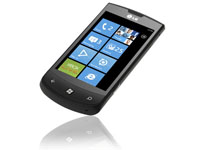 The “App versus Browser” debate is steadily being made moot; and rightfully so. As Greg Sterling notes in his post entitled “Giving In Google Goes ‘All In’ with Apps”, the search giant is hiring developers in order to make mobile apps of its own. In a separate and loosely related development, Damian Koh notes in CNET Asia’s blog that Microsoft Research has launched a project that beefs up the mobile user experience with healthy doses of “cloud-based” resources. In this case, an SDK for Project Hawaii marries Windows/Azure (cloud-based Web app servers), Bing Maps (for geographic info) and Windows Live ID for user authentication.
The “App versus Browser” debate is steadily being made moot; and rightfully so. As Greg Sterling notes in his post entitled “Giving In Google Goes ‘All In’ with Apps”, the search giant is hiring developers in order to make mobile apps of its own. In a separate and loosely related development, Damian Koh notes in CNET Asia’s blog that Microsoft Research has launched a project that beefs up the mobile user experience with healthy doses of “cloud-based” resources. In this case, an SDK for Project Hawaii marries Windows/Azure (cloud-based Web app servers), Bing Maps (for geographic info) and Windows Live ID for user authentication.
Hawaii is a set of enabling technologies bringing the prospects for speech recognition, optical character recognition or augmented reality into the mobile application mix. For those who have not seen Windows Phone 7, its mobile user interface starts with “Live Tiles.” Instead of static icons that invoke separate applications, Live Tiles illustrate dynamic data. The “messaging” app will show the number of “new” messages from the home page, of course, but the news app may show scrolling news, social networks can show status changes of friends and on and on. Thus dramatizing how mobile apps morph into hybrid apps that combine programs or applications on the device with both executables and data residing in the cloud.
The first apps for Hawaii, for instance, a “Relay Service” and a “Rendezvous Service” enable and leverage apps ability to communicate with one another to keep the information fresh and lively. These are attributes that mobile subscribers come to expect as the phone’s role as a highly personal tool for every day life becomes more prominent – given that the phones know where you are, where you’re supposed to be (given that it has calendar info), who you talk to (call records), who you may talk to (in a contact list) and is continuously updated and increasingly personal. Not all of this can (or should) reside on the Web.
Categories: Articles

 NiCE Interactions 2025: Agentic AI, Better Data, and a Whole Lot of Partnership
NiCE Interactions 2025: Agentic AI, Better Data, and a Whole Lot of Partnership  Getting It Right: What AI Agents Actually Mean for Customer Support (Webinar)
Getting It Right: What AI Agents Actually Mean for Customer Support (Webinar)  Beyond the Basics: How AI Is Transforming B2B Sales at TP
Beyond the Basics: How AI Is Transforming B2B Sales at TP  Five9 Launches Agentic CX: Toward AI Agents That Reason and Act
Five9 Launches Agentic CX: Toward AI Agents That Reason and Act